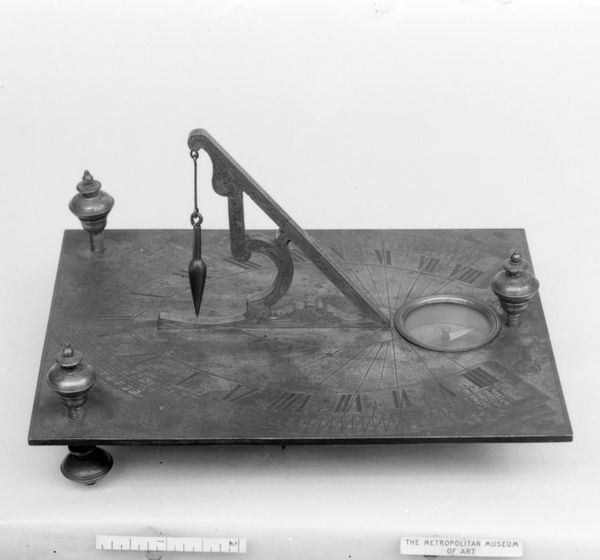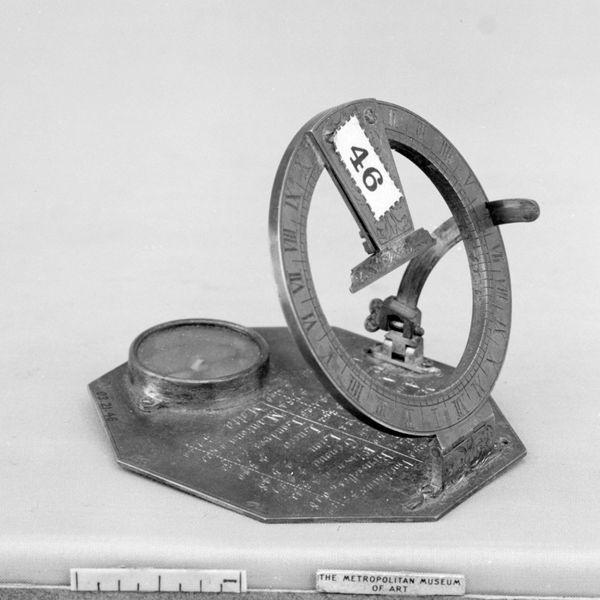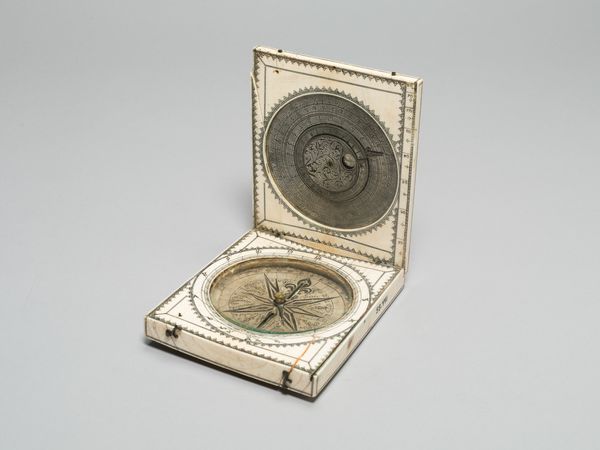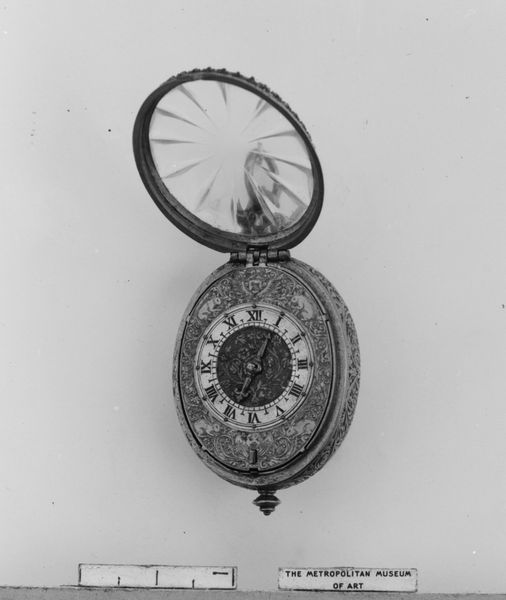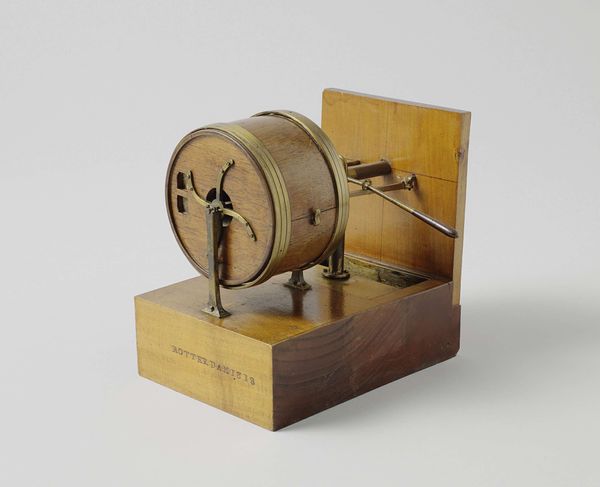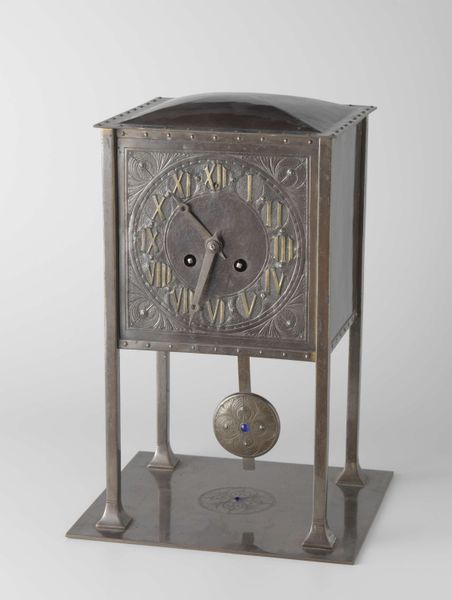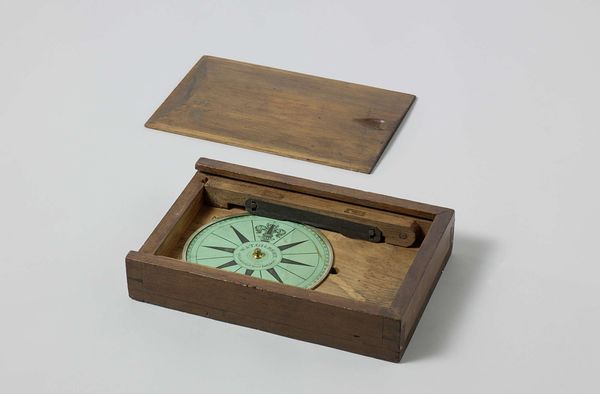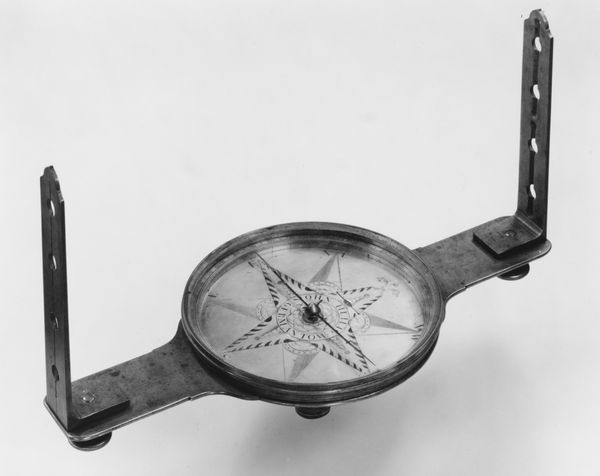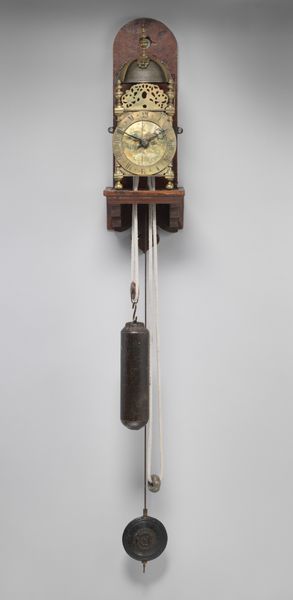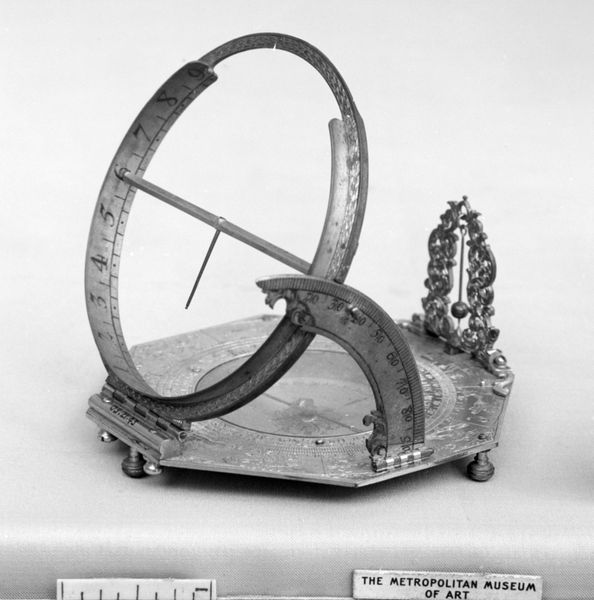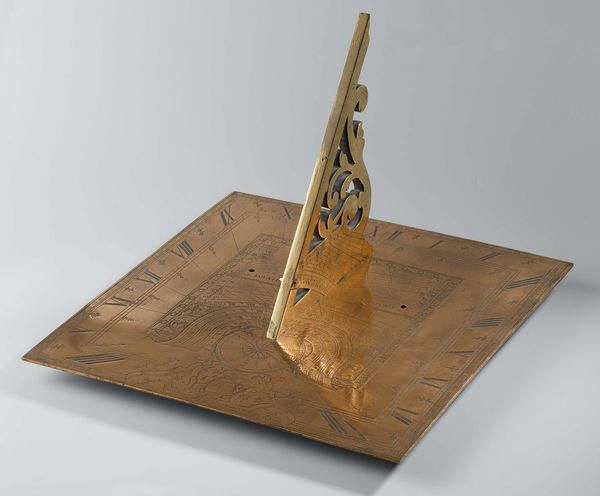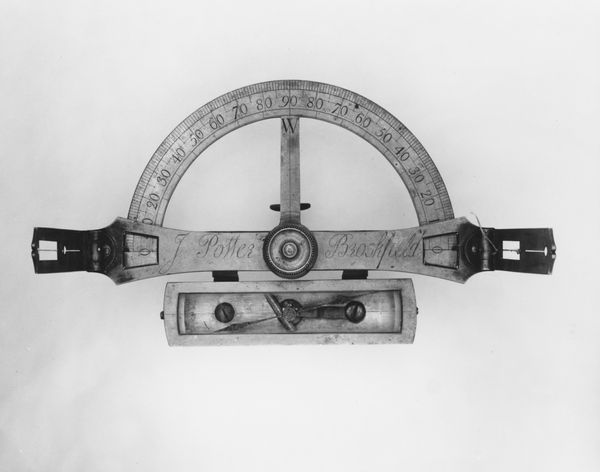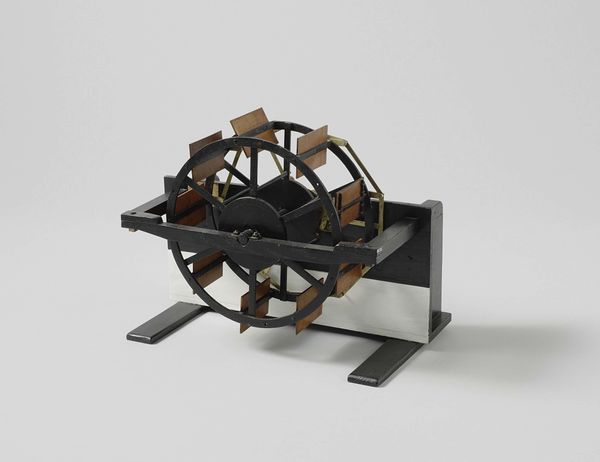
brass, sculpture
#
brass
#
baroque
#
ancient-mediterranean
#
sculpture
#
decorative-art
Dimensions: Overall: 8 1/2 × 8 × 7 1/2 in. (21.6 × 20.3 × 19.1 cm)
Copyright: Public Domain
Curator: Here we have a portable equatorial sundial, crafted in 1747 by Angelus Lusuergh. Notice the beautiful use of brass in this intricate sculpture, currently residing at the Metropolitan Museum of Art. Editor: My first impression is a kind of stark, functional beauty. It looks like a complex tool, but its geometrical harmony gives it an appealing aesthetic. Curator: Absolutely. The Baroque influence is quite apparent in the decorative elements, especially in the engraved floral motifs that adorn the square base, a detail juxtaposed against the dial's scientific precision. How does the functionality inform your interpretation? Editor: Well, this sundial would have been a privilege enjoyed by those with some social standing during that era. This object’s beauty makes me think of scientific advancement in Europe. Its development was occurring at the expense of others worldwide through colonialism, with the accumulation of knowledge intrinsically connected to economic exploitation. Curator: That's a potent reading. Structurally, the composition compels one to analyze the series of circles and planes that work in harmony. I'm particularly drawn to the gnomon's shadow, a pivotal part of its functional aesthetic, casting an evolving pattern over the radial lines to reveal the time. Its interaction forms a stunning interplay. Editor: Indeed. The shadow’s movement serves as a powerful reminder of the constant march of time, a universal truth experienced differently based on race, class, and geographic location. The Baroque embellishments act to further the point that only a segment of the global population benefitted. This complicates its beauty with the shadows of inequity. Curator: Your contextual overlay lends depth to its understanding. Looking at its craftsmanship, the dial epitomizes precision. Its existence encourages inquiry and introspection on how it represents the age it comes from. Editor: Yes, even with its ornamental frills, it invites us to consider not just the advancements of its era, but the cost and conditions under which that progress took place. Curator: I concur; appreciating the sundial through its design and also the implications gives it such a richness of appreciation. Editor: Indeed. Context informs our seeing.
Comments
No comments
Be the first to comment and join the conversation on the ultimate creative platform.
